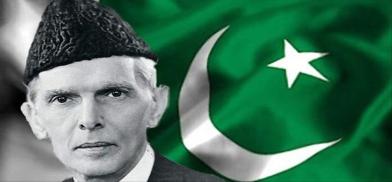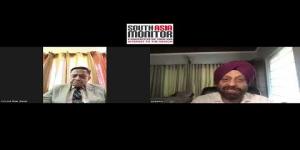Elite hegemony in Pakistan: Is the nation getting swallowed from within?
Such is the disparity that at a time when Aida Girma-Melaku, Unicef's representative, reported that Pakistan confronts a triple burden of malnutrition affecting young children, adolescents, and pregnant and lactating women, with 40 per cent of children under the age of five being stunted, Pakistan spent $1.2 billion on imports of luxury cars and electric vehicles for its rich and powerful in the last half of 2022.

In 1958, Pakistan became the first country to seek International Monetary Fund (IMF) assistance. Since the early 1990s, Pakistan has had 11 IMF programmes; Bangladesh has had three; India and China have had none. Despite periods of economic growth, Pakistan’s current GDP, per capita income, and GDP growth are among the lowest in its neighbourhood. Likewise, its unemployment and inflation rates are one of the highest in the region. The Human Development Index, which measures a country’s achievements through three basic dimensions – health, knowledge, and standards of living - placed Pakistan in the 161st position out of 185 countries in 2022. In other words, Pakistan is among the 25 countries with the lowest human development in the world.
The yawning asset disparity
In a widely reported speech to the Applied Economics Research Centre at the University of Karachi in April 1968, economist Mahbub ul Haq alleged that "22 industrial family groups had come to dominate the economic and financial life-cycle of Pakistan and that they controlled about two-thirds of industrial assets, 80 per cent of banking and 79 per cent of insurance assets in the industrial domain." The scenario hasn't changed much if experts are to be relied upon. The average asset holding of the top 10 per cent is almost 227 times that of the bottom 10 per cent. Though nearly 64 per cent of Pakistanis live in rural areas, only 1 per cent of farmland owners (mostly large feudal lords and military elites) own 20 per cent of the country’s farmland, and the top 20 per cent own 69 per cent of the country’s farmland (SAAPE Report 2019). Yet, the popular discourse that tries to identify the reasons responsible for Pakistan’s present socio-economic woes often overlooks the question: Is Pakistan being swallowed from within by its own rich and powerful?
The modus operandi of plunder
Leading defence analyst Ayesha Siddiqa in ‘Military Inc: Inside Pakistan’s Military Economy’, reveals that the Pakistan Army possesses 12 per cent of the country’s land, out of which two-thirds is owned by senior military officers. A major general gets 240 acres of irrigated land and is given more water for irrigation than the normal quota. Uzair Younus, Director of the Pakistan Initiative at the Atlantic Council’s South Asia Center points out that Lahore Gymkhana pays a mere PKR 5000 per year to the Punjab Government for rent. This is an estimated elite subsidy of PKR 30 crores per month. UNDP reports that Pakistan gives its elites an estimated $ 17 bn per annum as handouts.
Former Pakistan finance minister Miftah Ismail, in an article in Dawn, wrote that the government distributed PKR 580 billion among the richest 1 per cent Pakistanis under the Temporary Economic Refinance Facility. The government itself was borrowing at 15 per cent but the rich got money at 1pc. Such is the contrast that at a time when Aida Girma-Melaku, the Unicef representative, reported that Pakistan confronts a triple burden of malnutrition affecting young children, adolescents, and pregnant and lactating women, with 40 per cent of its children under the age of five being stunted, Pakistan spent $1.2 billion on imports of luxury cars and electric vehicles for its rich and powerful in the last half of the year 2022.
Post-colonial states and elitism
In his path-breaking work, ‘The State in a Post-Colonial Societies’ (1972) Pakistani sociologist Hamza Alavi argued that post-colonial states need to be understood as comprising an ‘overdeveloped’ bureaucratic–military oligarchy. Unless the lower and middle classes were already highly organized and conscious of class relations at the moment of independence, the overdeveloped oligarchic structure of the colonial state would inevitably be inherited by the newly independent state. This resulted, Alavi claimed, in domestic elites dominating the population in much the same way as the colonial administrators they had replaced. Although a number of scholars have since argued that Alavi’s analysis of the state and the ruling classes in post-colonial societies is now outdated as the concentration of wealth and power is not something unique to Pakistan. But, the trouble is that even after so many years of Dr Haq’s observation; many of the same families continue to rule.
The ‘chosen’ elite
In her book, Big Capital in an Unequal World: The Micropolitics of Wealth in Pakistan, anthropologist Rosita Armytage states, ‘The elite’ in Pakistan which is composed of different power blocs employs various strategies of competition and collaboration depending on the changing socioeconomic situation in which they exist and holds disproportionately high levels of economic and political capital. These elites have an uncanny aptitude for navigating the restrictions of the domestic regulations which seek to hinder their ability to become wealthier. Pakistan’s most longstanding elite families believe, ’Elites are the chosen people. They are the ones God has chosen to lead and to provide guidance to the people.'
The primary ingredient of ‘being elite’ in Pakistan is their deep intimacy with politics regardless of their origins in the business, bureaucratic, land-holding, military or political strata. This happens, as Miftah Ismail explains, “Political power too is concentrated not in parties but in personalities. Except for one religiopolitical party, there isn’t a party where the head is ever replaced. Politics is based on personalities down to the local level, where politicians come from families of ‘electable’, where fathers and grandfathers were previously elected.”
Even at the time of its creation, the politics in Pakistan was solely based on the personality cult of Mohammad Ali Jinnah. Swedish political scientist of Pakistani origin, Ishtiaq Ahmed in his book 'Jinnah: His Successes, Failures, and Role in History' writes, ‘A victorious Jinnah – who at one time claimed to have established Pakistan singlehandedly with the help of just one typist and had arrogantly told a delegation of Sikhs that his word would be equivalent to God’s in Pakistan – made no bones about strengthening the central government vis-à-vis the federating units.'
Decentralisation never happened
Hence, decentralisation of political and economic power was never allowed to take place nor was the spawning of the ‘consciousness’ of the lower and middle class which, according to Alavi, had the potential to resist the elitist hegemony. This led to an eternally volatile political structure which as Armytage observes is in the interest of these families and aids them to consolidate their grip further. As a result, at its uppermost levels, the country’s economic system is closed, and the elite, not legal statutes, create, control, and guard their domain, serving as gatekeepers to those outsiders who might seek to gain entry. This undermined the principles of democracy, equal opportunity, socio-economic mobility and justice.
Successful economies worldwide are run by new entrepreneurs who come from diverse backgrounds with innovative ideas. But in Pakistan’s case, the same old families call the shots. Therefore, Pakistan’s elite-dominated economy demonstrates few signs of transitioning to a globalized high-finance economy, and, hence, unable to replicate the economic growth patterns of India or China.
(The author is a Kolkata-based government official and UGC NET qualified researcher of Conflict Studies. Views are personal. He can be reached at abhishekchakraborty1704@gmail.com)










Post a Comment